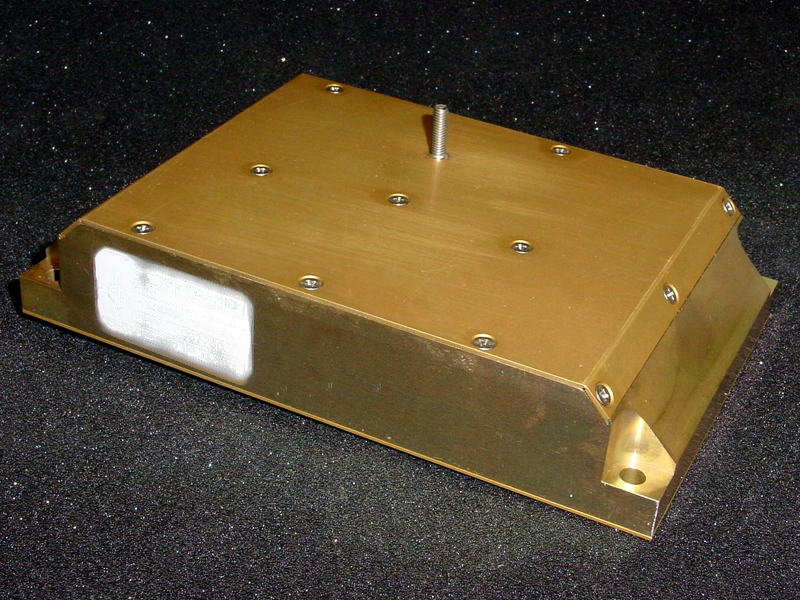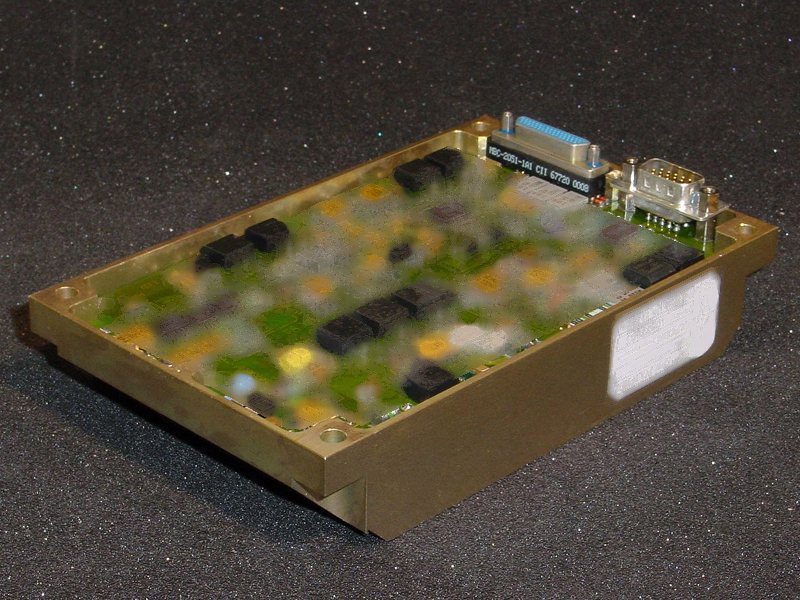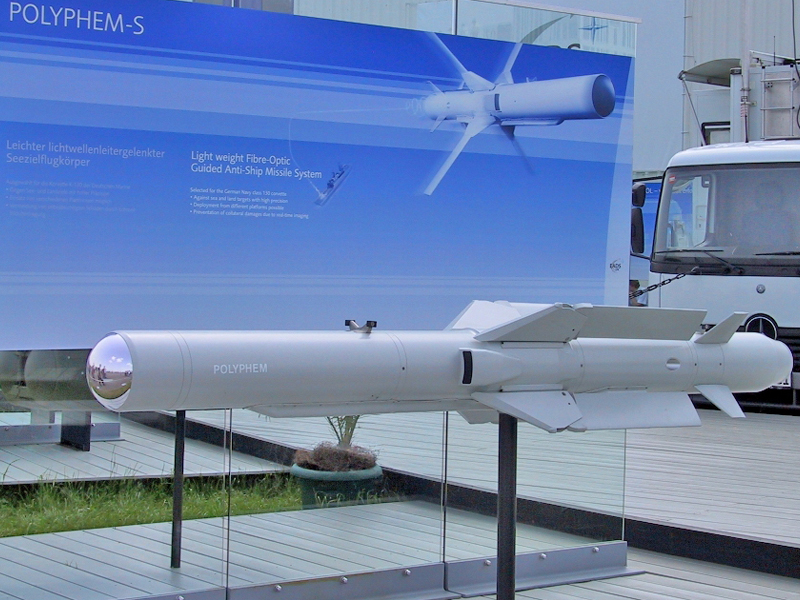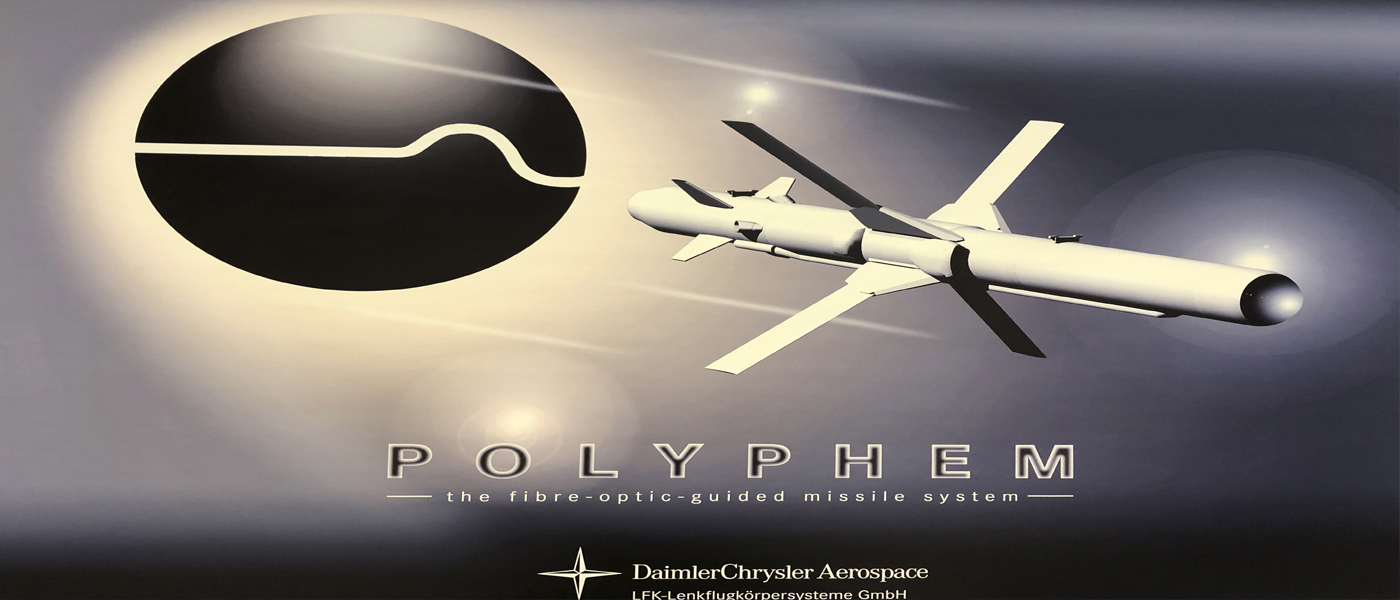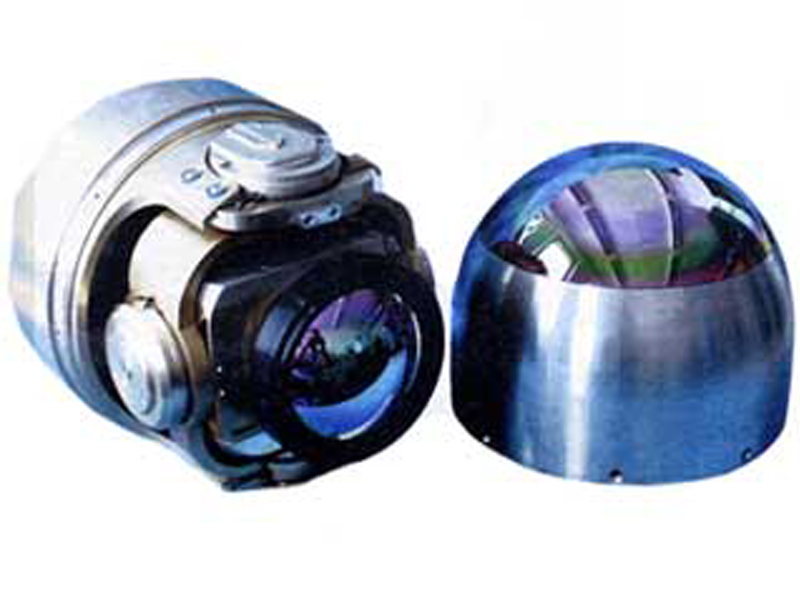Polyphem Missile
APCON Development and industrialisation of the power supply.
The Polyphem fibre-optic guided missile is designed for strikes at long-range targets from light land vehicles and against anti-ship or land based targets from the sea in which case the missile is launched from small ships or is helicopter launched. The Polyphem technology demonstrator programme was started in 1994 by Germany, France and Italy with Aerospatiale Matra Missiles (France), DaimlerChrysler Aerospace/LFK (Germany) and Italmissile (Italy).
In 1998, a contract was awarded for the operational demonstration phase. The aim of the Trilateral Fibre-optic Guided Missile System (TRIFOM)/Polyphem program is to prove the functionality of a fiber-optic guided missile system and associated technologies. This demonstrator phase was concluded in 2002. The development phase is planned to begin in 2005, following the signing of an agreement between the participating nations. EADS/LFK and MBDA Missile Systems are the participants in the TRIFOM/Polyphem programme.
The ship-launched version, Polyphem-S, is planned to be deployed on the K-130 corvettes to be built for the German Navy. A submarine-launched variant, to be called Triton, is also being developed. It will have a solid rocket booster rather than the turbojet engine and be launched from a torpedo tube.
Polyphem has a range up to 60km and uses infra-red imaging for high precision targeting by day and night against mobile or fixed targets. The images from an infrared camera in the nose of the missile are transmitted through a fibre-optic cable to a firing station, where they are automatically analysed, processed and displayed to the weapon system operator. The operator can then send the missile guidance instructions via the cable.
MISSILE
The main subsections of the missile are the infra-red sensor array and electronics, the warhead, the fuel tank and turbojet engine, the booster motor, battery, an actuator system and the fibre-optic bobbin and cable.
The infrared imager is mounted on a gyro-stabilized dual axis platform. The platinum silicide (PtSi) focal plane array provides high resolution images for target detection, discrimination and destruction, and for battlefield reconnaissance and damage control assessment. The quality of the image allows the operator to detect the targets at ranges up to 8km. The navigation system comprises an Inertial Measuring Unit (IMU) supported by an altimeter and GPS Navstar receiver and ensures that the missile follows a predetermined trajectory into the designated target area.
The fibre-optic transmission system provides simultaneous optical transmission of video data from the missile to the ground station and of command data from the ground station to the missile at data rates of more than 200MB/s. As well as a high data transmission rate, the fibre optic links provide immunity to active jamming and electro-magnetic interference. The missile is accelerated by a solid propellant booster to an initial cruising speed of more than 150m/s. The multipurpose 15kg warhead consists of a hollow charge with a hull of splinters, ignition electronics, impact contact and safety devices.
Features – Specifications:
- Fixed frequency operation, remote sensing, overload/short circuit protection, over-voltage protection and under/over-voltage control logic, over-temperature protection, power on reset.
- Very Small Dimensions: 160x100x31 [mm]
- The input circuit is equipped with a 3-stage differential common mode filter to reduce the conducted emission (CE) and to control the Conducted Susceptibility (CS) in accordance to MIL-STD 462.
- The unit is surge protected to meet MIL-STD-704D and EN2282. Inrush current limit at 15A with fold back characteristic. Main bus interface with on/off control circuit.
- Input Voltage: 18V to 36V (DC +5V/10A
- Output Voltage: +8V/1,5A / +15V/1,5A / +12V/1,5A / -15V/1,5A
